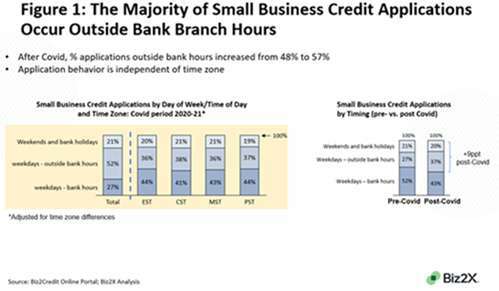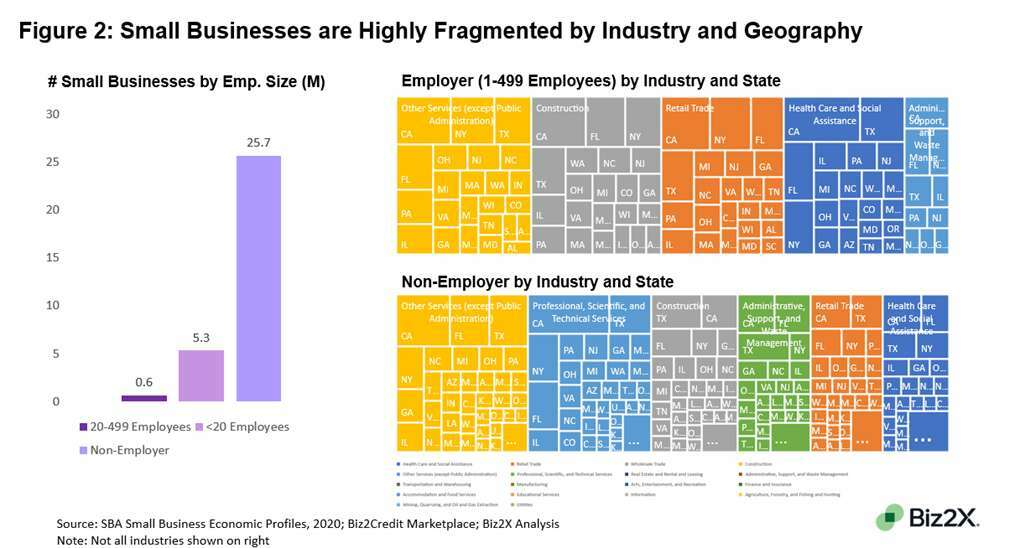
By Venkatesh Bala, Chief Risk Officer, Biz2Credit
As the Covid pandemic evolves, there is a great need to improvesmall business access to credit markets.A 2021 Federal Reserve survey showed that credit approval rates for employer small businesses plunged between 11 and 26 percentage points after March 1, 2020, among various types of lenders. This was an acceleration of a long-term trend: between 2007 and 2019, credit to small businesses shrank by 6%, compared to more than doubling for larger businesses.
Even the SBA-administered Paycheck Protection Program (PPP), designed to bring relief to millions of small businesses during the pandemic, had many of its loans going to the largest small businesses who were prior customers of big lenders, and not to the most vulnerable small businesses.
As the economy continues to recover, policymakers, regulators and bankers can take many concrete steps to ensure that small businesses, especially the severely underserved, have reliable, convenient, and affordable access to credit. Here are five specific steps.
(1) Robust online platforms where small businesses can apply directly for loan products
Small businesses do not have the resources and support networks that large businesses enjoy. They have to be able to apply for credit when they have time and be able to do so themselves. A digital channel is now more important than ever.
A 2021 Biz2X study showed that 57% of small business online loan applications occurred outside regular banking hours on weekdays or on weekends, up from 48% in pre-Covid period. This figure was virtually constant across major US census regions even adjusting for time zone differences (Fig.1).

(2) Cash-flow based scorecards
There is immense potential for banks, credit unions and other lenders to assess creditworthiness of small businesses based on their bank records. This is considered alternative data which contains detailed transactional information on cash flows. An Interagency statement from the Federal Reserve, the OCC, CFPB and others providing regulatory oversight of the banking system states:
“…[T]he agencies are aware that the use of certain alternative data may present no greater risks than data traditionally used in the credit evaluation process…some firms are automating the use of cash flow data to better evaluate borrowers’ ability to repay loans.”
They also note that bank records have unique benefits for credit assessment:
“Cash flow data are specific to the borrower and generally derived from reliable sources, such as bank account records, which may help ensure the data’s accuracy. Consumers can expressly permission access to their cash flow data, which enhances transparency and consumers’ control over the data.”
Mortgage giant Fannie Mae has taken an important step in factoring rental payments of borrowers from their bank statements in their mortgage underwriting. They estimate it will expand the qualified borrower pool by 17%.
Small businesses are heavily reliant on cash flows and bank statement records are particularly well-suited to create cash-flow based scorecardsfor evaluating their creditworthiness.
(3) AI-based fraud and risk methodologies
A key challenge for banks and credit unions is that the cost of assessing the creditworthiness of small businesses applying for a loan of $50,000 is almost the same as it for a larger business requesting $5 million. A major part of this expense is that the loan officer (orunderwriter) has to manually review dozens or hundreds of pages of financial documents, no matter the size of the business.
Digital workflows using artificial and machine learning techniques can greatly simplify and speed up the process of underwriting even for the smallest businesses.AIcan greatly reduce the drudgery involved in the underwriter’s current effort and enable small business loans of all sizes to be processed quickly at low-cost while ensuring robust controls on credit and fraud risks.
(4) A small business affiliate platform where national, regional and local community organizations can assist small businesses gain access to credit
Data from the SBA shows there are nearly 32M small businesses across 18 different industries and every state. Of these, 31M have either have fewer than 20 employees or no employees other than the owner. Small businesses are also highly dispersed by geography and industry (Fig.2).

Nationally and acrossstates and communities, various entities (such as business developmentorganizations, chambers of commerce, industry associations, accounting firms, community outreach
groups, and other small business service providers) can access a direct online portal where they can easily refer small businesses in their network to local or national lenders or even apply for credit on their behalf, with their permission.
Having an external entity with personal knowledge of the business providing a reference would be a significant reassurance to prospective lenders about the legitimacy and viability of the business.
Such an affiliate platform would be customized to the organization where they can monitor the status of their referrals and applications to keep the small businesses in their network updated about the status of their credit application in near-real time. Data on the referrals can be used to provide feedback to affiliates and improve referral quality over time.
(5) A facility for secure document exchange
Banks, credit unions and other lenders assessing the creditworthiness of small businesses will need to ensure the authenticity of financial statements and other records from the prospective borrower.
It is easier for them to do so for business customers for whom KYC and bank transaction records are readily available, which is why they typically focus on their own longstanding customers. This leaves many deserving small businesses in their footprint deprived of access to credit.
With a secure document repository, service providers to the small business (such as payroll companies, accounting firms, insurance agencies, etc.) can upload relevant documents on behalf of the small business. The small business can grant access to these documents to the lender when applying for a loan.While the small business has full control and exclusive knowledge of those accessing the documents, the lender has a significant assurance that the documents are genuine.
Straight-Through Processing for Small Business Credit
Currently, an individual customer applying for a credit card can apply online to various banks and receive a decision in a few minutes. The five steps outlined here can enable something strikingly similar for small businesses, which we label as “straight-through processing”.
Small businesses can either apply directly or with assistance from an affiliate, upload their business bank statements and enable secure and confidential access to their relevant business documents. Lenders will be assured of the reliability of such documents and can use AI and machine learning techniques to rapidly assess their creditworthiness using cash flow-based scorecards and other objective information.
Banks and other lenders can enable sound lending decisions rapidly and at low-cost, while delighting their business customers. Small businesses will receive quick and transparent decisions while being firmly in control of the process.
Policymakers and regulators can be assured that these steps can create a level playing field for small businesses of all sizes, including for minority, women-owned, veteran-operated and other business communities marginalized by the current credit system.
About Author:
Venkatesh Bala is Chief Risk Officer at Biz2Credit, a fintech operating an online marketplace for small business credit. Biz2X, its technology arm, constructs cloud-based platforms for small business lending.


